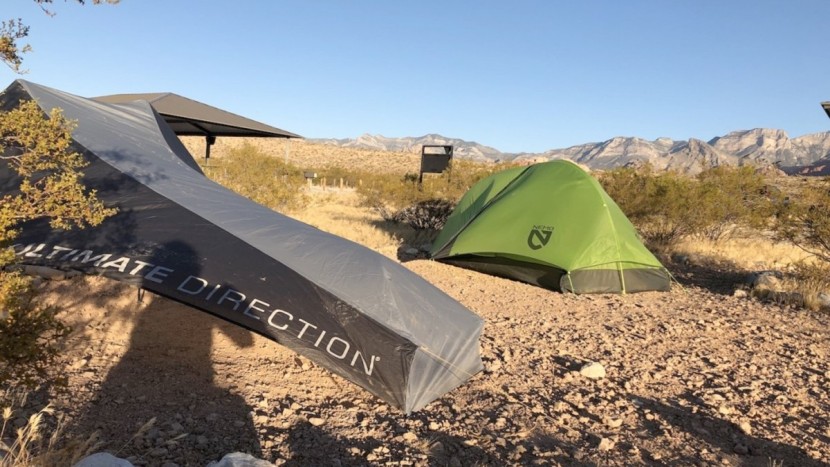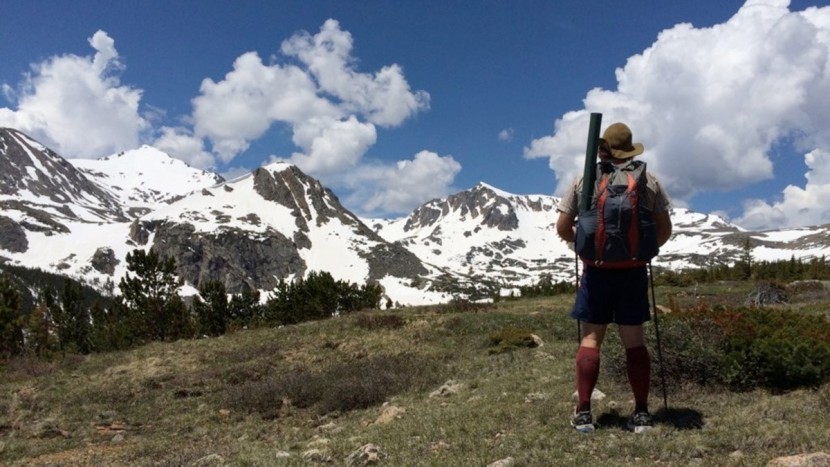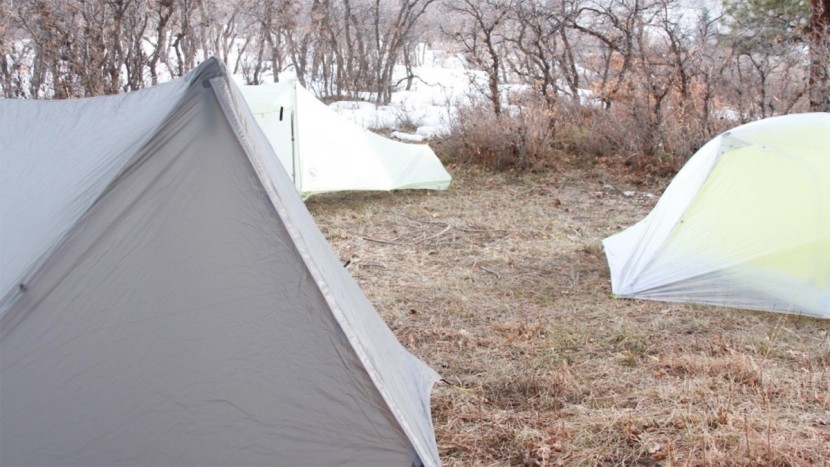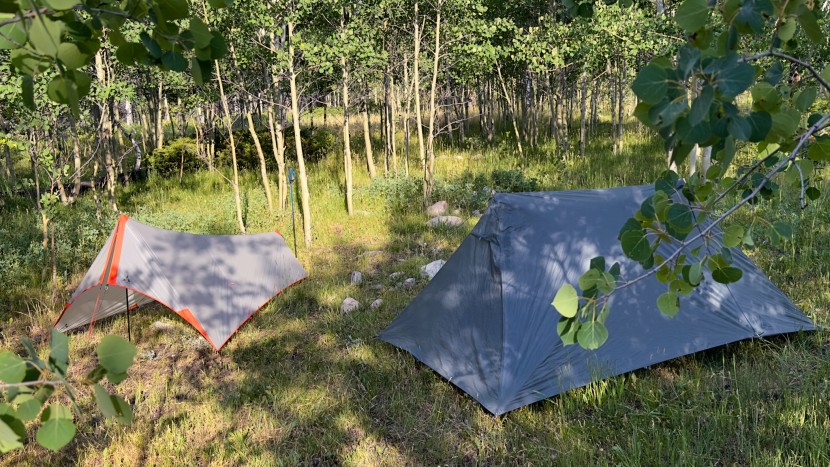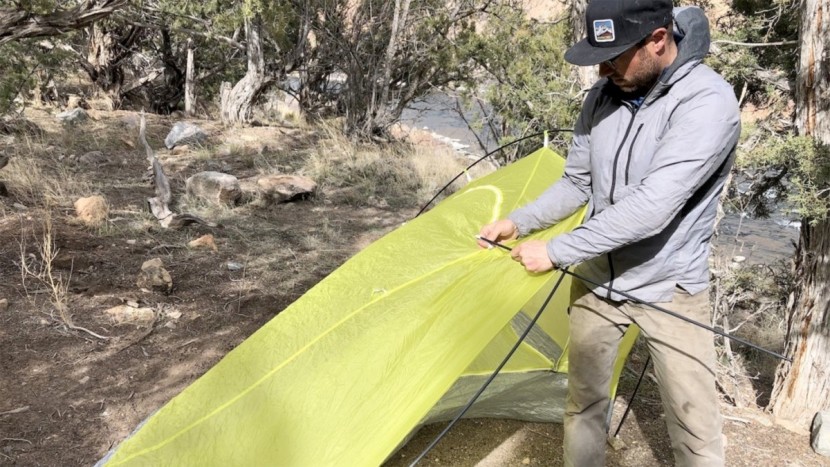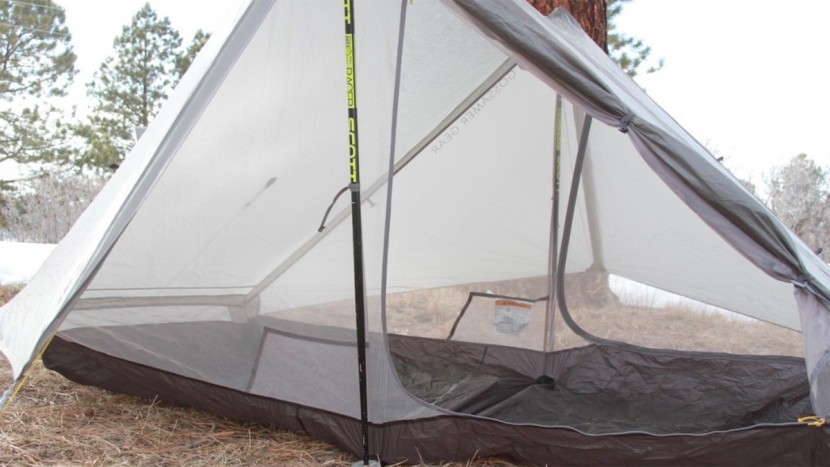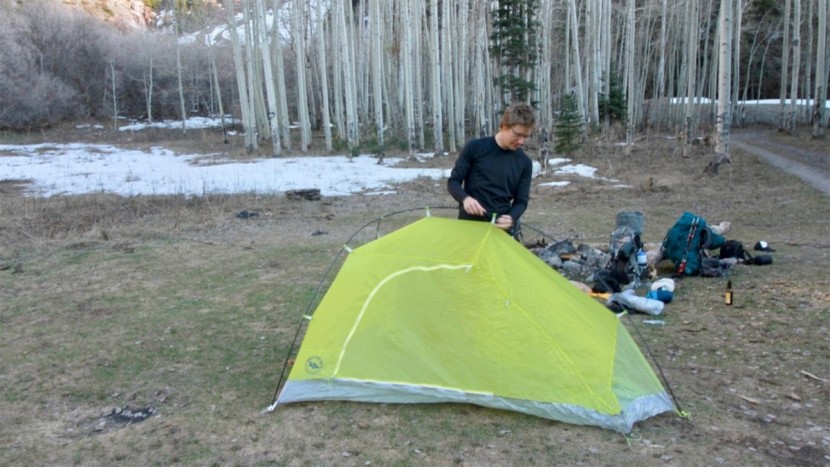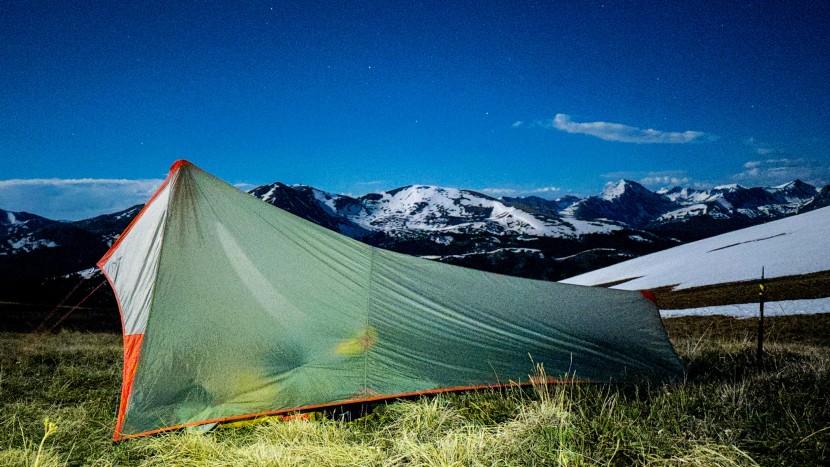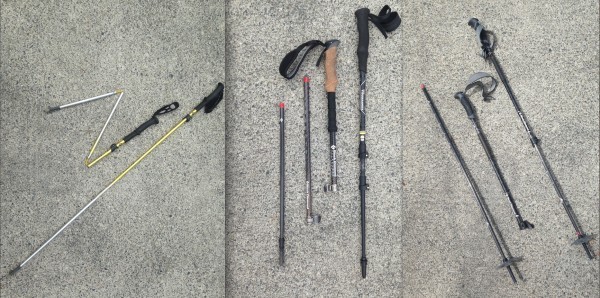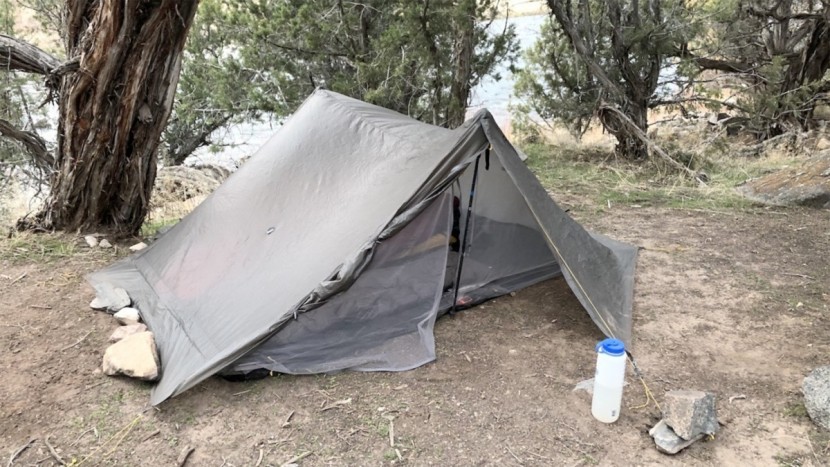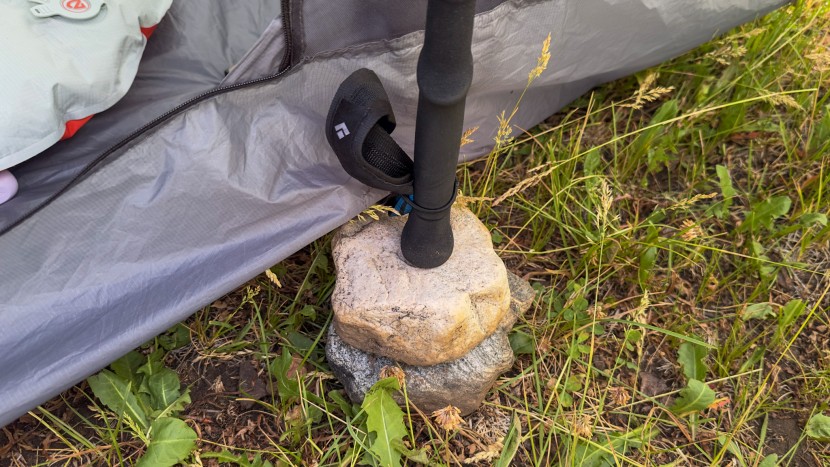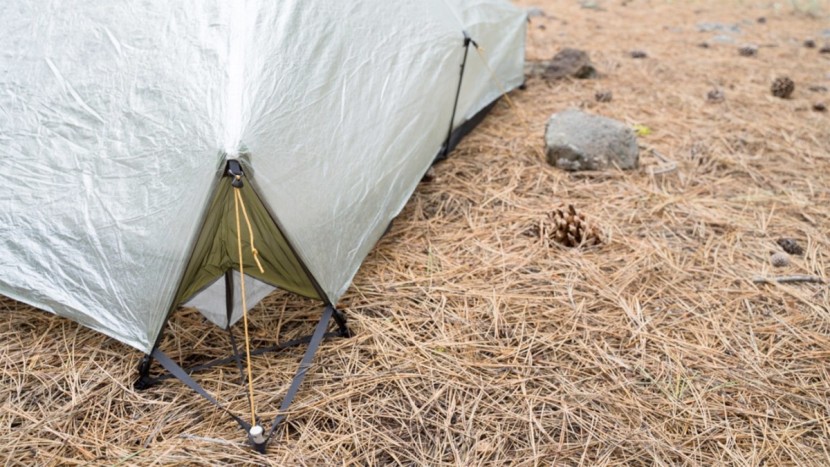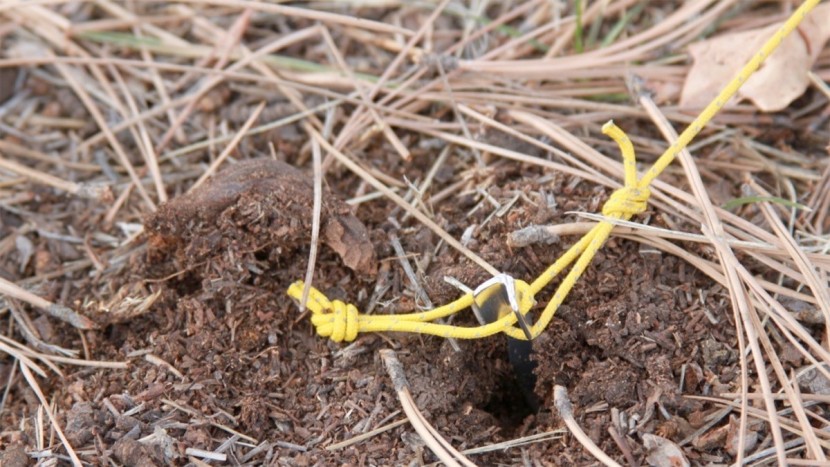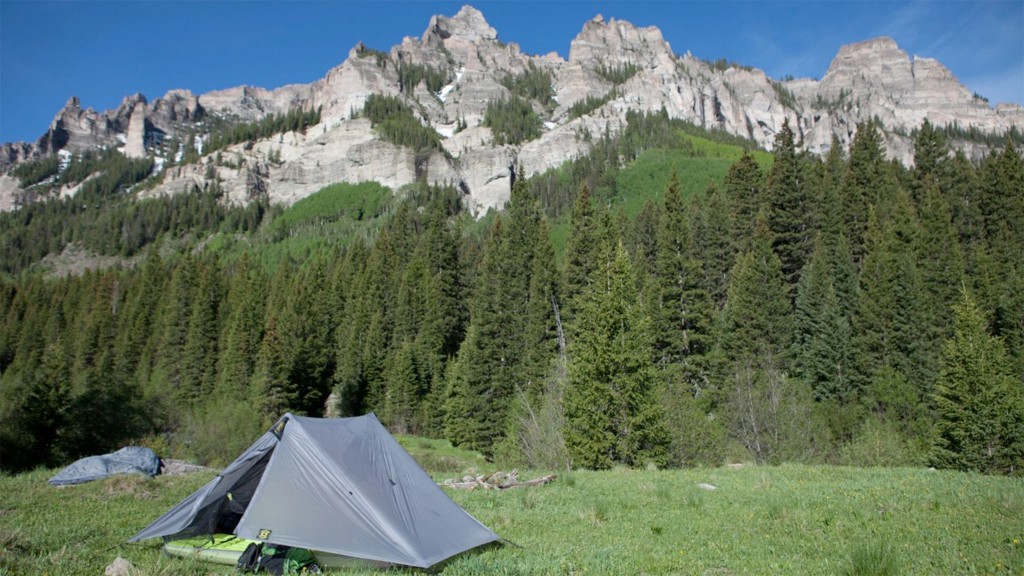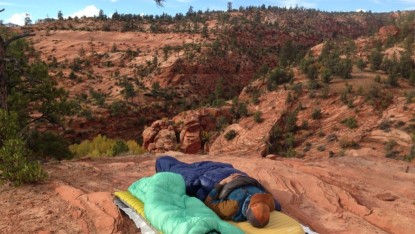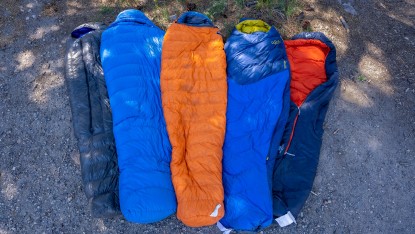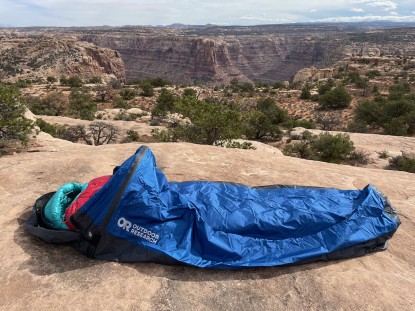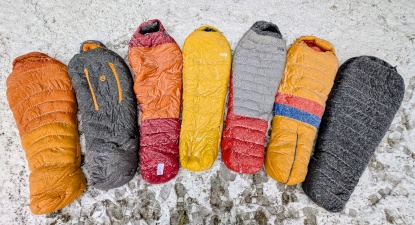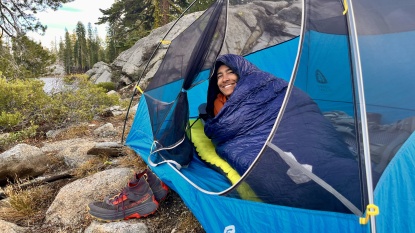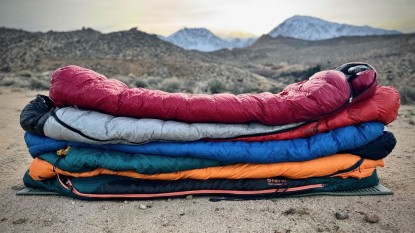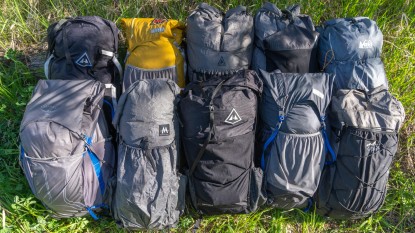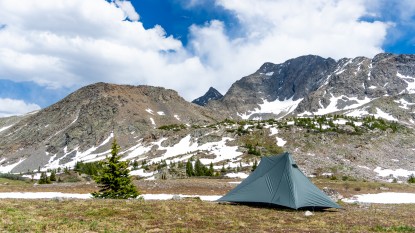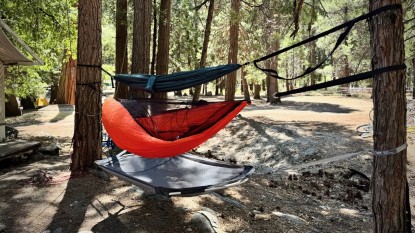The ultralight world keeps developing new technologies, making gear stunningly lightweight and easy to pack along. However, despite buying less material, you may pay a lot more! You'll notice that many of the ultralight tents in this review are super expensive when compared to other tents on the market. This is because they use fancy fabrics that attempt to be durable while offering the raw essentials of protection on the trail. Some tents can achieve an outstanding balance of convenience and lightweight construction, though few have perfected it. And those that have are pricey. In this article, we'll help you navigate this crazy market by talking about what “ultralight” means, budget, the types of shelters out there, and the fabrics used to make them. Knowing this will help you deduce the pros and cons of each, finding a tent that's everything you ever hoped for.
Related: Best Backpacking Tents
Why Ultralight?
The term ultralight bounces around the outdoor gear world a lot these days, but what does it mean? Lightweight, super ultralight, minimalist, extreme ultralight, fast packer? The terminology all gets a little silly, but behind it, it is a clear goal — to carry as light a load as possible while enjoying your backcountry adventures safely. If you're somebody who appreciates just carrying what you need, instead of bringing the kitchen sink, this may be the market for you. After collaborating with a group of our experts — professional guides, alpinists, long-distance overnight runners, and thru-hiking backpackers — it is clear why ultralight travel is the way to go for some, and perhaps not for all.
Long days on the trail — under the weight of a heavy pack — can be cumbersome, slow, and exhausting. While your body most definitely adapts to these conditions, lightening your load is the obvious choice to make backcountry travel more fun and enjoyable. It allows you to hike more miles, put less stress on your joints (especially in steep terrain) while giving the opportunity to pack more food for fewer fill-ups, especially on long trails. The result? You won't find yourself cursing while dragging a heavy pack through mosquito-laden swamp trails; instead, you can cruise through them more efficiently. Overall, carrying less, in our opinion, equates to more fun while hiking, the ability to do longer days, and less overall strain on the body.
Considering Budget
While buying an ultralight shelter may be exciting, it's important to acknowledge that it can easily become costly. Tarps are the most affordable way to go, while single and double-walled, fully enclosed tents can be the most costly. If you're willing to sacrifice some creature comforts like the ease of set-up or 4-walled protection, you can also purchase a tarp for a much lower price. If you're not, you're going to find yourself shelling out at least a couple hundred dollars. In general, the lightest and most durable tents are also the most expensive. To get the most value for your dollar, make sure to hone in on material construction and consider if this is an investment you're willing to make.
Types of Shelters
Once you've decided that an ultralight shelter is for you, it's time to look at the many different options out there. Before we begin, it's essential to acknowledge that different types of shelters will offer different levels of protection and functionality. In this section, we outline the four different types of shelters and their respective pros and cons. When looking at options in our review, be sure to identify what type of shelter it is using this terminology.
Freestanding and Semi-Freestanding Tents
A very light, dedicated-pole, double-wall tent provides the most traditional protection when selecting from these ultralight tents and shelters. They are constructed with an interior tent that has a rainfly that drapes over the top of it. Best for beginners and those who appreciate a traditional design with protection from all four sides and enhanced warmth. They are also an excellent option for those in humid environments where ventilation is key. If you already like your more traditional freestanding tents and all the comforts they give you, but just want a lighter option, go with this style of ultralight tent.
Pros
- You are covered on all four sides, offering weather protection and privacy
- Better ventilation means less condensation on the interior
- The floor isolates you from the wet or muddy ground
- The inner tent protects you from flying bugs and creepy crawlies.
- Higher level of warmth and insulation, meaning you can get away with a slightly lighter sleeping bag than in an open shelter like a tarp
- More intuitive set-up with no need to use or carry poles
Cons
- Less adaptable to different types of terrain and need to set up one way
- Typically heavier with more parts
- Less packable it has more parts
- Getting these designs to be lightweight can mean the use of very expensive materials
Double Wall Trekking Pole Tents
A double wall trekking pole tent is different from a freestanding tent in one critical way: instead of the tent needing its own specific pole design to set up the tent, it uses one or two trekking poles. And because a relatively shorter and stiff trekking pole is very different than a longer and more flexible tent pole you see in dome tents, the overall design is much different too. The trekking pole is usually positioned vertically from the ground to the peak of the tent, and the tent itself is pegged to the ground, creating a massive amount of tension in the rain fly, giving the tent its shape, form, and strength. If you've ever seen a giant circus tent, a trekking pole tent is a surprisingly similar concept in miniature.
Double Wall Trekking Poles are our suggestion for most people who want to move from a freestanding tent to a more ultralight tent, while still retaining many of the benefits of a freestanding tent. Reasonable prices for a great double-wall trekking pole tent also make them an excellent value.
Pros- Using what you're already bringing along — your trekking poles — saves weight at no additional cost
- Extremely storm-worthy designs
- Integrated floor with mesh protects from rain
- Side doors and vent ports allow for excellent ventilation options
- Inner mesh provides excellent protection from bugs
- Priced competitively compared to freestanding options
- Option to set up easily fly-only
Cons
- Can be more difficult to set up
- Staking down the tent is mandatory
- You need to bring your own poles, and breaking a trekking pole can mean not being able to properly set up your tent.
Tarp Tents (Single Wall Trekking Pole Tents)
A tarp tent is a shelter with a single wall and a floor and enclosure that is either permanent or can be removed. These shelters combine both the fly and the inner mesh into one layer, making it a lot lighter than double-tent construction. These shelters are also called “Single Wall Trekking Poles Tents,” and you'll see versions of double wall trekking pole tents that drop even more weight by going single wall. This is our top recommendation for backpackers seeking an ultralight and protective option. Like their double-wall trekking pole brethren, they primarily use a trekking pole or two to set up. They're not the best for humid environments as ventilation and condensation can become a huge problem, so look for options with clever ventilation features.
Pros
- Ultra Lightweight construction with a small, packable profile
- Protective from bugs, weather, and other environmental factors
- Set-up becomes easy with practice
- Many options have removable components to help reduce overall weight
Cons
- Site location is key as stakes need to be sunk with guy lines tensioned properly
- Not free-standing
- Single-wall construction doesn't breathe, resulting in issues with condensation
- Set-up takes skill and practice
- Many tents are not built with removable components to save weight
- Most are very expensive
Tarps
A tarp alone is the lightest and least expensive type of ultralight shelter. It is the preferred mode of travel for experienced hikers as a result of its adaptability. With seasoned experience, you can even pitch it year-round, but it does require additional protective elements. There are two main types of tarp set-ups that we've come across: shaped tarps and Flat Tarps. A shaped tarp catenary cut ridgeline makes it much easier to achieve a taut pitch; a flat tarp is more versatile and can pitch many more ways. Some tarps are literally just a square sheet of fly material with tie-out points located on the perimeter of the tarp itself, while other shaped tarps blur the line between tarp and tarp tent, with options to add accessories like mesh inners, floors, and even vestibules to the bare-bones design. The modular nature of tarps means they can be set up in a variety of environments and circumstances with a little know-how.
Pros
- Great airflow and ventilation
- The lightest and most packable option
- Inexpensive in comparison to other shelters
- With practice, you can have excellent protection from wind and water
Cons
- A skilled eye for site selection is required, with protected sites being best
- Knot skills may be required for optimal set-up
- Need to carry a waterproof groundsheet
- Always an open side when pitching the tent
- Lacks privacy
- No bug protection unless added
- May need to use a bivy sack or liner for additional protection
- Modular accessories cost extra and add weight and bulk when used.
Shelter Construction
In this section, we discuss tent fabrics, trekking poles, guylines, stakes, and modular components, which are all important considerations to make when looking at the overall construction and longevity of a shelter. Here we point out what to look for and the pros and cons of these components. On your search, be sure to consult “spec” sheets to see what the shelter includes and what is constructed out of.
Tent Fabric
There are only a few main types of fabrics you'll come across in ultralight tent construction. All offer different levels of durability with different pros and cons. All are waterproof and suitable for ultralight construction. Look for tents made out of composite materials like Dyneema Composite Fiber (DCF), Ultra TNT, Polyester, and Nylon. This list reflects the strongest to the weakest fibers, with the strongest offering the most resilience and weather protection.
Composite Materials (aka Cuban Fiber)
Originally developed as a fiber to build high-performance sails, this by far the strongest and most expensive fiber available. Dyneema was once heralded as the “strongest fiber in the world.” It offers fifteen times the strength of steel, making it ultralight and ridiculously durable. Also, if it does tear, it is supremely easy to patch, using any tape on the market. Used in the construction of backpacks and other outdoor gear, this is the fiber to look for if you want your tent to retain its shape and strength even in the hairiest of weather and environments. Tents that use it are costly, but also the lightest options out there. Although the tensile strength of composites is incredible, they're relatively weak towards abrasion. A particularly sharp pine needle can poke a hole in your expensive shelter, and these shelters need to be carefully folded to be put away, instead of being stuffed in a sack. Thankfully, holes can also be easily patched in the field with special tape.
NylonNylon fabric is used in combination with a waterproof coating like silicone, which makes it far more water-resistant than bare nylon while improving strength. While this fabric isn't nearly as strong as DCF or other composites, it offers a higher strength than steel and is quite waterproof. Nylon will absorb water no matter the coating, which causes the material to stretch and perhaps require you to re-tension the tent in the middle of the night during a rainstorm. Nylon tents can be considerably cheaper than ones made of composite materials, and don't need any special treatment when packing them away.
Polyester
Polyester is a similar material to nylon, except that it does not stretch anywhere near as much as nylon does. And like nylon, it's relatively inexpensive, strong enough, and packs easily. In the past, polyester was seen as an inferior material when compared to nylon and was only used on budget, car-camping tents. But materials science has come a long way, and these two materials are often equally compelling, especially for the value they pack for the price of the tents that they're made out of. The devil is in the details, and even similar on paper, polyesters may perform differently from each other.
You may notice that many tent fabrics have a “D” rating that stands for “denier.” A higher denier number means a higher woven density of the material of choice. Based on the material, the thread count, or the number of fibers per square inch, will vary. But within the same fabric, a higher number is better. This equates to more durability and better strength overall, so look for this. Avoid lower counts, especially when they match at higher prices.
Trekking Pole Considerations
When hiking with trekking poles, it is compelling (from a weight savings standpoint) to use them for shelter supports when you camp. A few experienced backpackers prefer a dedicated-pole ultralight tent even though they hike with trekking poles, but if you want to get ultralight, choose a shelter supported by your poles. One crucial consideration — if you “basecamp” in the backcountry, camping in the same place for a few days, and head out on hikes or climbs from camp, you'll probably want your poles free during the day. Two folks can leave a pair of poles set up in their shelter, and hike with one each of the other set, but most people who “basecamp” for a few days prefer a dedicated-pole tent.
If you prefer a pole-pitched tent, be sure to buy trekking poles with adjustments, not a fixed length. This will provide more adaptable setups and options for those types of shelters. Those that go at least to 120 cm will accommodate most tents; however, we'd recommend going longer than shorter. So, if you only need a pole that'll go to 125 cm and there is a longer option, opt for that as you can often make a shelter with more headroom and better livable space.
Stakes and Guy Lines
Most of the ultralight tents and shelters we tested include guy lines, but there is a chance that you'll need to purchase stakes separately. Look closely at the product descriptions, especially to see if the total weight includes stakes or not!
Paracord and Guy Lines
While your tent might come with the guy lines provided, it's important to bring a little extra cord with you to increase adaptability. If you find a rocky site, for example, that the guylines simply can't reach, or you can't stake into, extra pea cord is incredibly handy to wrap around rocks as alternative anchors or to increase the length to reach areas that might be better to put stakes into the ground. Bringing at least 30 feet of additional paracord (that is incredibly lightweight) is cheap insurance to ensure that you can set up in most types of terrain.
Stakes
There is a world of different stakes out there, and several ultralight versions are available. Unfortunately, these aren't always the most durable. Several times we've hammered them into the ground, finding that the “neck” of the stake is the weakest point, or bending or flexing under the force. See our favorite guy line and stakes article for what to look for.
Modular Components for Ultralight Tents and Shelters
Modular components are those that you can add to or take from your tent set-up. Those that offer options for a removable bug net or floor, for example, provide great ways to customize it for weight and necessity. These options are typically much more versatile over a wide range of missions.
Related: Modular Accessories
How Much Should You Carry?
When going quick and light, it's important to be picky about weight and packability. As a result, you should consider your “base pack weight.”
This weight refers to the total weight of all the equipment you carry, not including consumables: water, food, and cooking fuel. Base weight is a perfect measurement, as you will likely carry nearly the same gear and clothing for two nights or ten, only the consumables' weight increases. As a guideline, you should seek a shelter system (not counting the weight of poles) less than 1 pound per person, and for lightweight, less than 1.5 pounds per person. With shelter weight split between two people, you can optimize space to bring along other essential items like food, water, and clothing.
Conclusion
The backcountry world is a wild and vast place that is quite alluring for exploring by foot, bike, or boat. In the ultralight world, you can carry everything you need without it slowing you down. Take on the miles, experience nature, slow down, and enjoy the beauty of the natural world. While an ultralight shelter isn't what everybody needs, it certainly makes trail life more manageable.


